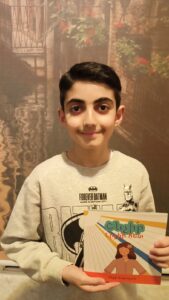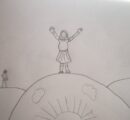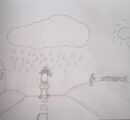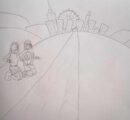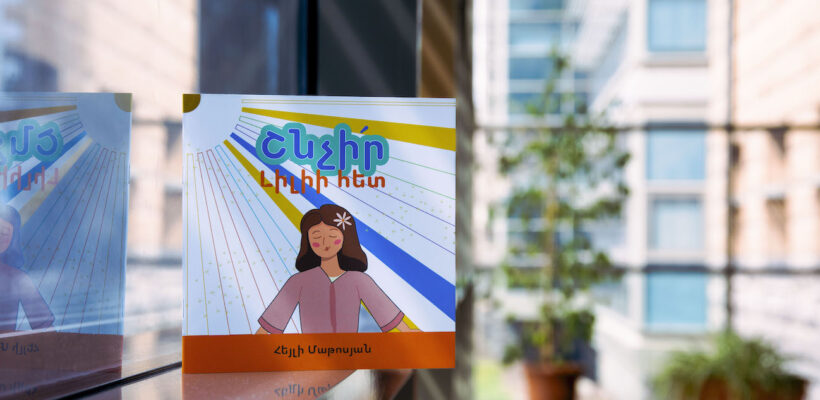
Gayane Tevosyan (CTr. ’19) Translates Children’s Book
5 min readYEREVAN, Armenia — The American University of Armenia (AUA) is pleased to announce that Gayane Tevosyan (CTr. ’19) has published an Armenian translation of the English-language children’s book Breathing with Lily (in Armenian, Շնչի´ր Լիլիի հետ), originally authored by Hayley Matossian. Tevosyan had previously translated Susan Sontag’s book Regarding the Pain of Others, published by AUA Press in 2022. The final chapter of this book was published in Granish in 2021.
We spoke to Tevosyan regarding her motivation behind translating a children’s book and the challenges she faced, her experience in AUA’s Graduate Certificate in Translation (CTr) program, and more.
What motivated you to translate this book?
Dr. Shushan Avagyan, CTr coordinator, associate professor, and director of AUA Press, introduced me to the book’s author, Hayley Matossian. She has three kids and is a yoga instructor in California who has also taught at a juvenile home in the Bay Area and in city schools. She is now teaching yoga in a drug and alcohol rehabilitation center. This was something new for me: I’ve never translated a children’s book before, so I thought I should try it.
Why did you want to translate a children’s book?
I have a young daughter myself, and my brother has two sons close to her age, so I thought this would be a great opportunity to seize and that the book would be appealing to schoolchildren of their age. It talks about how kids can overcome difficulties and strong emotions and offers a very simple exercise: sit and breathe. I thought it could help children.
What role did AUA’s CTr play in your journey as a translator?
CTr played an instrumental role in my journey as a translator. I have always enjoyed doing translations, and in 2018, with the full support of my family and my work supervisors at AUA, I decided to apply to the program and was admitted. The knowledge and skills I acquired through CTr completely shaped me as a translator. Although it was a one-year certificate program, it felt like a fully-fledged academic degree program. If AUA offered a master’s in translation, I would definitely apply to it. I hope that someday, this will become a reality. I strongly recommend all those who wish to start a career in translation to enroll in this program, and I sincerely hope to see it expand one day.
Going into CTr, people would ask me what I planned to do after graduation, if I would work in a notary office, and I would say, “No, I want to translate books,” because translation for me is not just mechanical. It’s a lot more than that. You have to read, understand, do research, compare the languages, and try to make the target language faithfully communicate what the author is trying to convey in the original.
I am very thankful to the program and its amazing instructors for the wonderful job they are doing. CTr is a practice-oriented program that immerses students in real projects with concrete results, such as this children’s book or my translation of Sontag’s Regarding the Pain of Others. Many CTr graduates have also published their translations with major publishing houses in Armenia.
Can you please reflect on your experience in AUA’s CTr program?
I completed my undergraduate and graduate degrees at Brusov State University, but the education at AUA was nothing like what I had previously experienced. It promoted creative thinking. We had two instructors, Dr. Avagyan and adjunct lecturer Davit Isajanyan, who both opened our eyes to the world of translation and even theory. We studied a lot of theory, and I know some students would sometimes complain about the amount of reading, but for me, it was as helpful as the practical component. During the second semester, we did more practical work. That’s when I started the Susan Sontag project. For my individual project, I started translating one of Ler Kamsar’s diaries, and I intend to complete that. I’ve met with his granddaughter, and it’s now in progress.
What lessons did you learn in the CTr program that have carried into your work as an author/translator?
I’ve learned that translation is not merely mechanical work: it requires full concentration, research, and delving into the topic, the text, and the author’s world. You have to consider, “What was he thinking when he wrote this?” You have to understand the author’s message and convey that to the target-language audience. You have to stay true to yourself, to the author, and to the readers at the same time. Depending on what type of work you’re translating, it differs. In some cases, you have to make some changes, improvise, to be able to convey the author’s intent. In other cases, you have to stay close to the author’s style. It’s very interesting to try to differentiate between instances when you have to change the style and when you have to stay true to the author’s structure.
What is the most rewarding part of publishing this book?
Although children’s books are quite common in Armenia these days and more are being published daily, there is something unique about this book. It is not just a story or fairytale. It is more than that; it describes a certain situation that may occur in any child’s life and offers a simple but useful solution: breathing and exercises that are common in yoga. I believe this book will also be useful in local children’s centers that offer yoga.
What are some challenges you faced in translating this book?
Given the differences in style and grammatical structure between English and Armenian, the most challenging part was preserving the rhymes in the text and making it sound like a poem, while at the same time, keeping it simple and understandable for children. This created an opportunity for me to draw upon my creativity skills.
What are your next plans as an author/translator?
I think that nowadays, during this turbulent time for our nation, it’s imperative to make the works of excellent Armenian writers available in other languages. Translators have a critical role to play here. I am committed to this mission and hope that my next project, translating Ler Kamsar’s diaries, will serve this purpose. I am also in touch with Hrant Matevossian’s son, and I recently submitted one short piece to an online journal publication. I am hoping these collaborations will continue. This is my priority for the foreseeable future.
Finally, I would like to express my gratitude to a few people. First, to the author of this amazing book, Hayley Matossian, for the wonderful collaboration. It was truly enjoyable to work with her. I would also like to thank Joseph Matossian and Molly Freeman for their support in publishing this book. Our sponsors were also instrumental in enabling us to accomplish this publication quickly and efficiently. A special thank you goes to Dr. Avagyan, my role model in translation, who has been my mentor throughout all this time, since my very first day in the CTr program. And, of course, this project would not have become a reality without the help of my super talented and beloved 10-year-old nephew Armen, who illustrated the book, and his mother Armine who designed it.
We plan to distribute copies of the book to several libraries, my daughter’s school, my nephew’s school, and some bookstores in Armenia. We also plan to donate a copy of the book to the AUA AGBU Papazian Library to support the Children’s Literature courses offered in the English and Communications program. We also hope to organize a small event, a short presentation and reading of the book, for children.
Founded in 1991, the American University of Armenia (AUA) is a private, independent university located in Yerevan, Armenia, affiliated with the University of California, and accredited by the WASC Senior College and University Commission in the United States. AUA provides local and international students with Western-style education through top-quality undergraduate and graduate degree and certificate programs, promotes research and innovation, encourages civic engagement and community service, and fosters democratic values.

